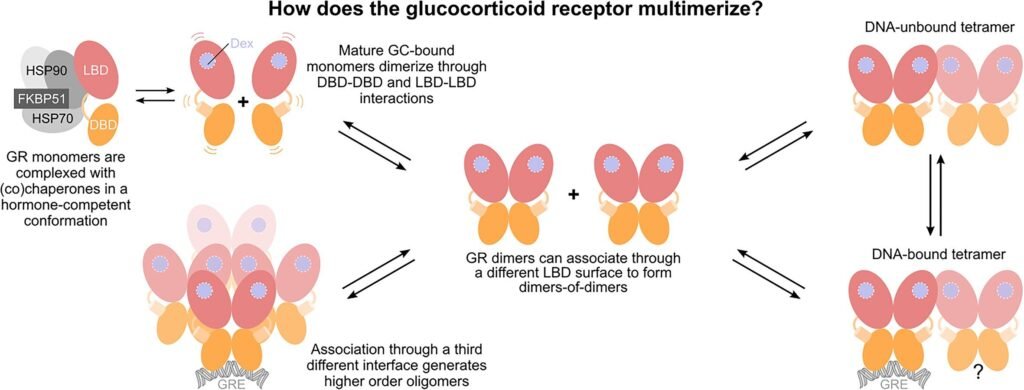Researchers at the University of Barcelona have made a groundbreaking discovery in understanding the glucocorticoid receptor (GR), shedding light on how it forms oligomers in the cell nucleus. This new insight could pave the way for the development of more selective drugs that target the GR, minimizing adverse effects such as immunosuppression and bone loss.
Led by Professor Eva Estébanez-Perpiñá, along with young researchers Andrea Alegre-Martí and Alba Jiménez-Paniño, the study was published in Nucleic Acids Research. It involved a collaboration between teams from the US National Institutes of Health, the University of Barcelona, the Institute for Research in Biomedicine, and other institutions.
The traditional view of the GR as a monomer or homodimer has been challenged by this study, which reveals that the receptor forms larger oligomers, primarily tetramers, inside the cell nucleus. These tetramers play a crucial role in regulating gene expression related to glycemia, metabolism, and the anti-inflammatory response.
The study utilized cutting-edge techniques such as X-ray crystallography, molecular dynamics simulations, mass spectrometry, and high-resolution fluorescence microscopy to unravel the complex interactions that drive GR multimerization. These findings provide a detailed molecular mechanism for how the receptor associates within the nucleus, highlighting its high plasticity and flexibility in adopting multiple conformations.
Mutations in the GR gene can disrupt the multimerization process, leading to glucocorticoid resistance and various health issues. The study identified pathological variants that affect the receptor’s functionality, shedding light on diseases like Chrousos syndrome and offering new avenues for precision drug design to modulate GR function with unprecedented specificity.
Overall, this research opens up new possibilities for addressing diseases associated with GR dysfunction, including autoimmune disorders, asthma, Cushing’s syndrome, and Addison’s disease. By understanding the complex mechanisms of the GR, scientists are moving closer to developing targeted therapies that can improve patient outcomes and minimize side effects.


